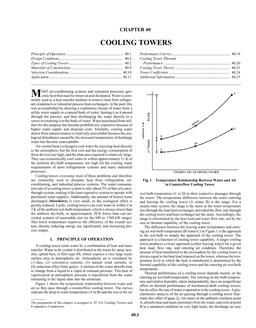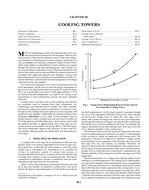
S40 — Cooling Towers (SI)
- Comments Off on S40 — Cooling Towers (SI)
- ASHRAE
Most air-conditioning systems and industrial processes generate heat that must be removed and dissipated. Water is commonly used as a heat transfer medium to remove heat from refrigerant condensers or industrial process heat exchangers. In the past, this was accomplished by drawing a continuous stream of water from a utility water supply or a natural body of water, heating it as it passed through the process, and then discharging the water directly to a sewer or returning it to the body of water. Water purchased from utilities for this purpose has become prohibitively expensive because of increased water supply and disposal costs. Similarly, cooling water drawn from natural sources is relatively unavailable because the ecological disturbance caused by the increased temperature of discharge water has become unacceptable.
Principle of Operation
Design Conditions
Types of Cooling Towers
Materials of Construction
Selection Considerations
Application
Performance Curves
Cooling Tower Thermal Performance
Cooling Tower Theory
Tower Coefficients
Additional Information
ISBN: 978-1-947192-53-9 (for SI versions of chapters)
ISSN: 1930-7705 (for SI versions of chapters)
Citation: 2020 ASHRAE Handbook — HVAC Systems and Equipment
Product Details
- ISBN(s):
- 9781947192539
- Number of Pages:
- 23
- Units of Measure:
- SI
- File Size:
- 1 file , 11 MB
- Product Code(s):
- D-S402020SI


